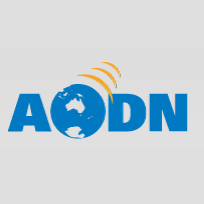Full description
Data on the morphological and reproductive responses of 4 species of wild caught Abatus heart urchins (A. nimrodi, A. shackletoni, A. ingens, and A. philippii) to sewage effluent from the Davis station sewage outfall. Between 19 and 21 individuals of each species were collected from three sites close to the station. The Sewage outfall site, which acted as the impacted site for the study, and two reference sites, one at Airport Beach, and a second and Heidemann Bay.Morphological measurements taken from each individual were length, width, height, anterior length, and posterior length. A qualitative assessment of the calcareous test of each individual was conducted to determine the presence of any abnormalities (as per Land 2005, PhD thesis) in the individuals morphology.
Reproductive data collected were a gonadosotic index (calculated by dividing the gonal mass of a individual by the total mass of that individual). And for females morphological measurements (length and width) of each brood pouch were taken, and the type and number of juveniles in each pouch was counted.
Data available: In the spreadsheet provided a description of measurements is given in the first tab.
All morphological and reproductive data is presented in the second tab. In full these are;
Parent Barcode (for tracking purposes)
Individual Barcode (for tracking purposes),
date collected (date the animal was collected)
date processed (date data were collected)
site (site the animal came from)
species (nimrodi, shackletoni, ingens, or philippii)
sex (male or female)
samples taken for other projects (morphology, genetics, histology)
Morphological measurements (length, width, height, posterior length, anterior length, all recorded in millimetres)
Any of a possible 6 abnormalities observed.
Brood pouch morphometrics (length and width in millimeters of each of the 4 brood pouches for a female)
Reproductive fitness, being the number of young at any of 3 stages in each of the 4 brood pouches and the total number of juveniles produced by the adult female.
Total Wet Mass (mass of the entire animal recorded in grams)
Gonad Wet Mass (mass of the gonad of an individual)
Gonadosmotic Index (measure of reproductive fitness, and is the Gonad Wet Mass divided by the Total Wet Mass of each individual)
A blank datasheet used to record the data is contained within the third tab.
The two final tabs are appendices used to aid the qualitative assessments. The first (Appendix 1) gives photo descriptions of each of the known abnormalities in Abatus sp (Adapted from Lane (2005) PhD thesis). The second (Appendix 2) gives photo descriptions of each of the developmental stages of juveniles in Abatus sp.
Lineage
Progress Code: completedData time period: 2013-01-03 to 2013-01-17
text: westlimit=77.75024; southlimit=-68.71944; eastlimit=78.50006; northlimit=-68.48396
User Contributed Tags
Login to tag this record with meaningful keywords to make it easier to discover
Download the dataset (GET DATA)
uri :
https://data.aad.gov.au/eds/4702/download![]()
Public information for AAS project AAS_4100 (PROJECT HOME PAGE)
uri :
https://projects.aad.gov.au/search_projects_results.cfm?project_no=AAS_4100![]()
Public information for AAS project AAS_4177 (PROJECT HOME PAGE)
uri :
https://projects.aad.gov.au/search_projects_results.cfm?project_no=AAS_4177![]()
Citation reference for this metadata record and dataset. (VIEW RELATED INFORMATION)
uri :
https://data.aad.gov.au/aadc/metadata/citation.cfm?entry_id=AAS_4177_Abatus_Morphology_Davis_2012_13![]()
- global : AAS_4177_Abatus_Morphology_Davis_2012_13


